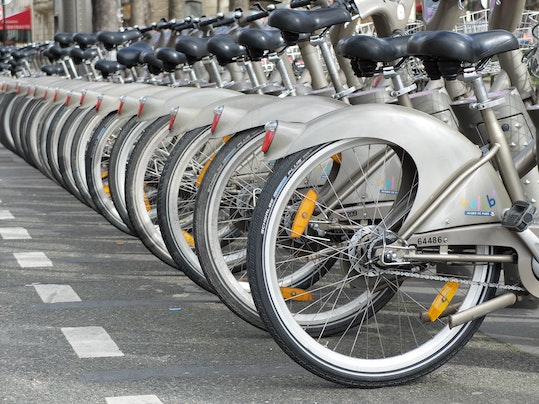Last week, the AR6 Synthesis Report 2023, more commonly known as the IPCC report, was published. As it uncovers the physical science behind the climate crisis, we want to share with you the 10 main findings.
1. Unprecedented impact on the the Earth’s Climate
Human-induced global warming is impacting the Earth’s climate in an unprecedented way in recent history. As a matter of fact, the last decade was warmer than any period in the last 125,000 years. The sea level rose faster than any prior century in the previous 3,000 years, and summer Arctic ice coverage was smaller than anytime in the last 1,000 years. If the temperature keeps on increasing, it will amplify the magnitude of these changes, leading to Greenland ice sheets completely melting.

Photo: Sea ice (Source: Pexels)
2. Severe effects on people and ecosystems
Climate’s impact on ecosystems and people is more extreme and widespread than expected, and they will keep on escalating with every fraction of a degree of warming. About half of the global population already deals with severe water scarcity for at least one month per year. In the same way, higher temperatures are allowing the spread of vector-borne diseases, such as malaria and Lyme disease. Exceeding 1.5 degrees C could also lead to the irreversible extinction of local species.
3. Irrevocable damages
Some damages are so severe that they are irreversible. We can take the example of coastal communities in the tropics, who have seen entire coral reef systems experience widespread mortality. Coral reefs being used to ensure their livelihood and food security, this makes a vulnerable community even more fragile. Another example would be the rising sea levels that have forced other low-lying neighborhoods to move to higher ground and abandon cultural sites.

Photo: Coral reefs (Source: Pexels)
4. Risk of exceeding 1.5 degrees C temperature rise before 2040
The IPCC also found that global GHG emissions will peak before 2025 and that there is more than a 50% chance that global temperature rise will reach or exceed 1.5 degrees C (2.7 degrees F) between 2021 and 2040. Research showed that even by achieving their climate pledges, countries would only reduce their GHG emissions by just 7% from 2019 levels by 2030. This is not sufficient considering that to avoid a temperature rise to 1.5 degrees C (2.7 degrees F), GHG emissions would have to drop by 43%.
5. Climate change’s responsibility in intensifying inequalities
Climate change, along with all the efforts to adapt to and mitigate it, is increasing inequalities across the world. As a matter of fact, households earning in the bottom 50% are responsible for 15% of the world’s GHGs, in contrast to families with incomes in the top 10% who account for 45%. Yet, it’s the historically marginalized and poorer communities that suffer the most from climate change. For example, Mortality from storms in countries with high vulnerability to climate change has been multiplied by 15 since 2010.

Photo: Industrial plant (Source: Pexels)
6. Necessary fossil fuels ban
The world must stop the use of fossil fuels, which is the number one cause of the climate crisis. To limit the warming to 1.5 degrees C (2.7 degrees F), the global use of coal would have to fall by 95% by 2050, oil would have to decline by about 60% and gas by about 45%.
7. Adoption of a more environment-friendly lifestyle
Fossil fuels are not the only ones responsible for GHG emissions. Our day to day lives and society are producing GHG emissions, such as power generation, buildings, industry, and transport. They are responsible for almost 80% of global emissions while agriculture, forestry and other land uses account for the remainder.The IPCC came up with 10 key solutions on how to mitigate climate change, such as retiring coal plants and increasing public transportation.

Photo: Electric bike (Source: Pexels)
8. Insufficient funds for Climate finance
Even though climate policies are being considered in more than 170 countries, they rarely see the light as the finance dedicated to scaling solutions is not enough. According to the IPCC, funds for adaptation reached only $23 billion to $46 billion from 2017 to 2018, which would only cover 4% to 8% of tracked climate finance. To be able to adapt to climate change, developing countries alone will need $127 billion per year by 2030 and $295 billion per year by 2050.
9. Climate finance increase necessary to achieve SDG’s
Climate finance for both mitigation and adaptation have to increase drastically this decade if we are to achieve global climate change goals. Indeed, even though the annual public and private climate finance has risen by 60% since the IPCC’s Fifth Assessment Report, it is still not enough. Climate finance will need to increase between 3 and 6 times by 2030 to achieve mitigation goals.

Photo: Forest (Source: Pexels)
10. Need for carbon extraction politics
Carbon removal is now essential to limit global temperature rise to 1.5 degrees C.The IPCC offers solutions to remove carbon from the land and the ocean such as reforestation and seaweed cultivation. But then reiterates that all solutions present merits and drawbacks.
If you want more details, go check out the IPCC’s website for the full AR6 Synthesis Report !









